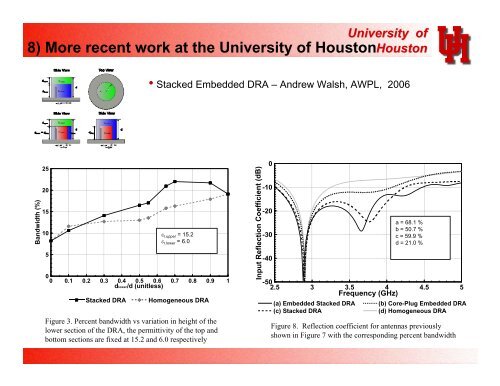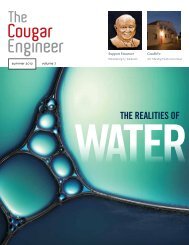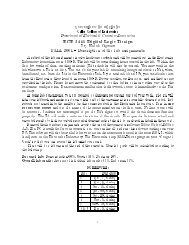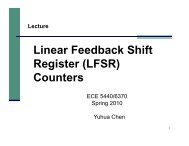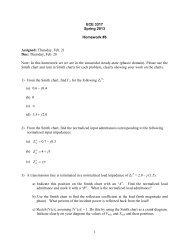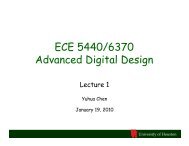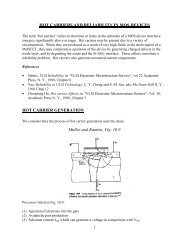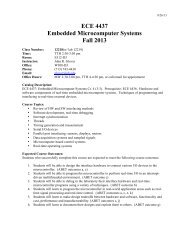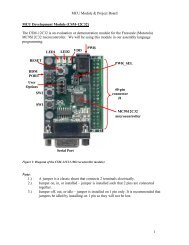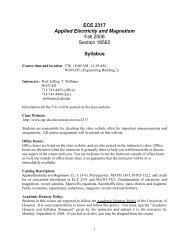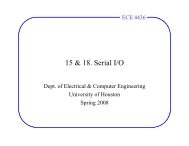The History of the Development of the Dielectric Resonator Antenna
The History of the Development of the Dielectric Resonator Antenna
The History of the Development of the Dielectric Resonator Antenna
Create successful ePaper yourself
Turn your PDF publications into a flip-book with our unique Google optimized e-Paper software.
8) More recent work at <strong>the</strong> University <strong>of</strong> HoustonUniversity <strong>of</strong>Houston• Stacked Embedded DRA – Andrew Walsh, AWPL, 2006250-20Input Reflection Coefficient (dB)20-10Bandwidth (%)1510ε r.upper = 15.2ε r.lower = 6.0-30a = 68.1 %b = 50.7 %c = 59.9 %d = 21.0 %5-4000 0.1 0.2 0.3 0.4 0.5 0.6 0.7 0.8 0.9 1dlower/d (unitless)Stacked DRAHomogeneous DRAFigure 3. Percent bandwidth vs variation in height <strong>of</strong> <strong>the</strong>lower section <strong>of</strong> <strong>the</strong> DRA, <strong>the</strong> permittivity <strong>of</strong> <strong>the</strong> top andbottom sections are fixed at 15.2 and 6.0 respectively-502.5 3 3.5 4 4.5 5Frequency (GHz)(a) Embedded Stacked DRA(c) Stacked DRA(b) Core-Plug Embedded DRA(d) Homogeneous DRAFigure 8. Reflection coefficient for antennas previouslyshown in Figure 7 with <strong>the</strong> corresponding percent bandwidthICEEA '07 -- Sept 20, 2007 46


